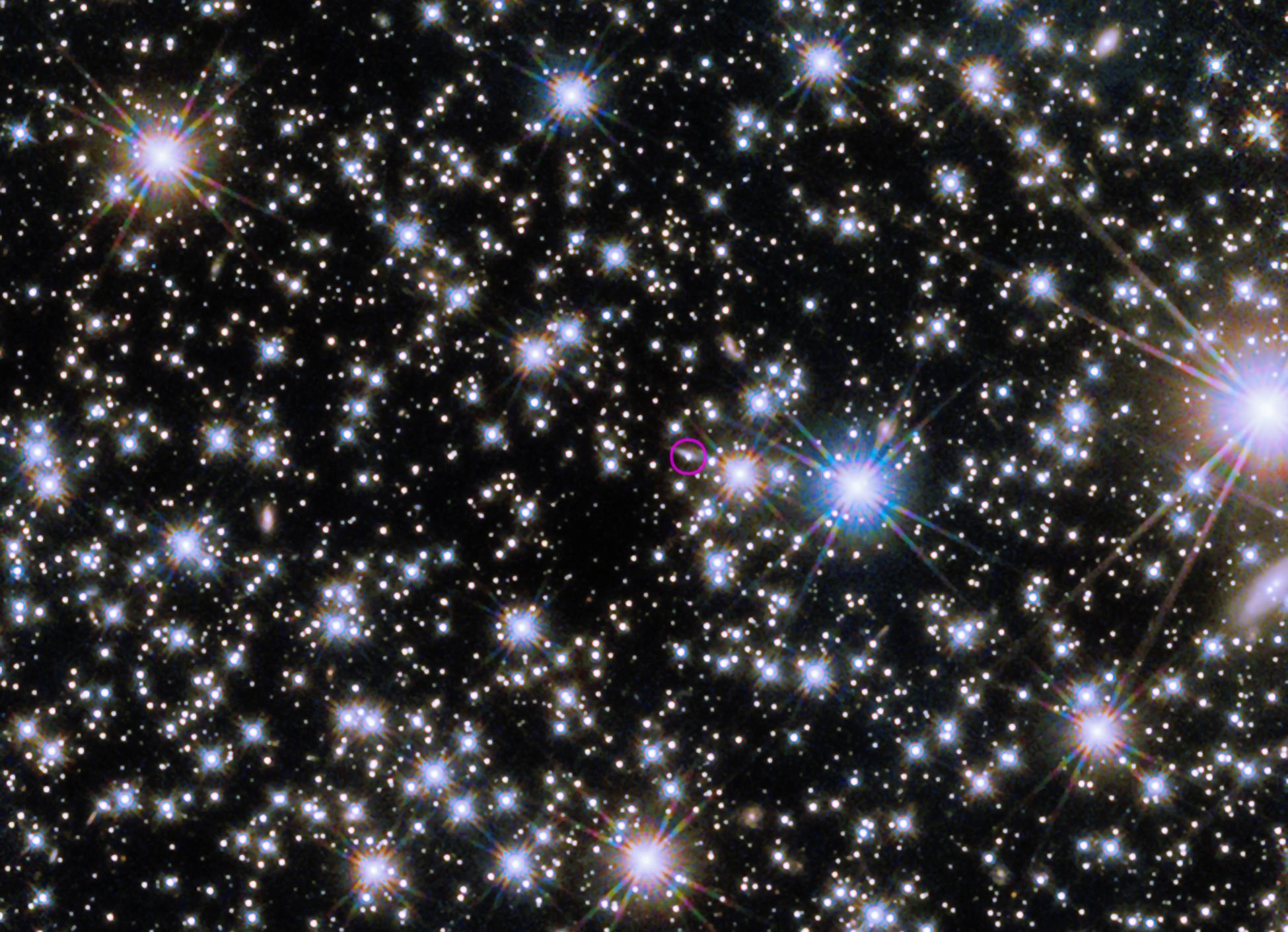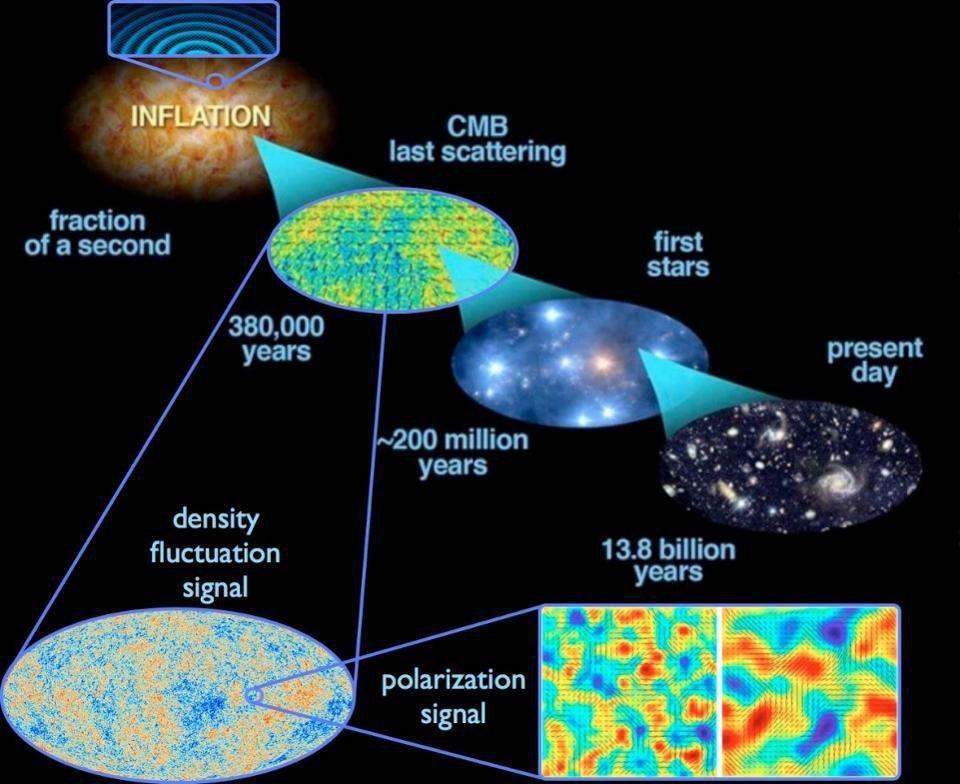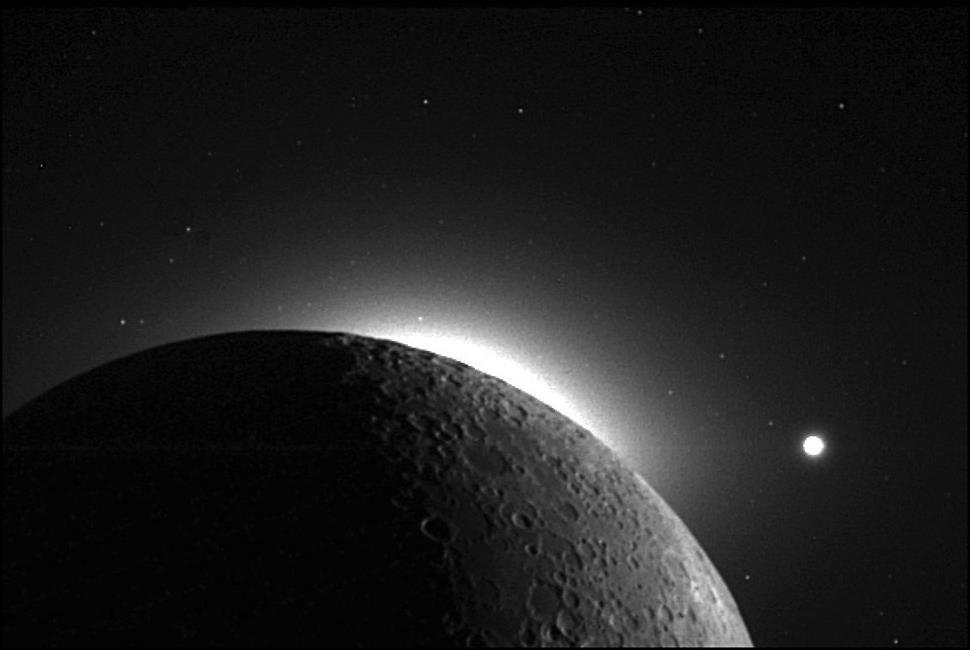Surprise: the Moon outshines the Sun at the highest energies

- As the second-brightest object in Earth’s skies behind only the Sun, the Moon’s close proximity explains why no other star, planet, satellite, or galaxy can outshine it.
- But in all the wavelengths of light we’ve ever seen, from radio waves to infrared to visible light to ultraviolet to X-rays, the Sun is much brighter, as the Moon primarily reflects the Sun’s light.
- When we launched our first gamma-ray observatory, however, we got quite a shock: the Sun emits no gamma-rays, but the Moon is gamma-ray bright! Here’s the surprising science of why.
If you look at all the objects in Earth’s skies, both natural and artificial, it should come as no surprise that the Sun is the brightest object of all. The Sun, after all, produces its own light, powered by nuclear fusion in its core. That core-generated energy not only holds the Sun up against gravitational collapse, but also propagates to the Sun’s edge, the photosphere, where the Sun emits radiation over a wide range of wavelengths that correspond to a temperature of around 6,000 K. Although the Moon is the second-brightest object that we see, it’s only so bright because of its very close proximity to Earth; most of the Moon’s light, intrinsically, is just reflected light from the Sun.
Although this was first shown to be true in visible wavelengths of light, the 20th century revealed that the same circumstances held for a wide variety of other wavelengths. The Sun was the brightest object, followed distantly by the Moon in second place, as seen from Earth in:
- X-rays,
- ultraviolet light,
- visible light,
- infrared light,
- and radio light,
with other planets, stars, and galaxies trailing far behind the two. But when we began looking at the sky at the shortest, highest-energy wavelengths, we realized this picture was no longer universally true. The Sun emits practically no gamma-rays, but the Moon emits copious amounts of them. Here’s the science of why.
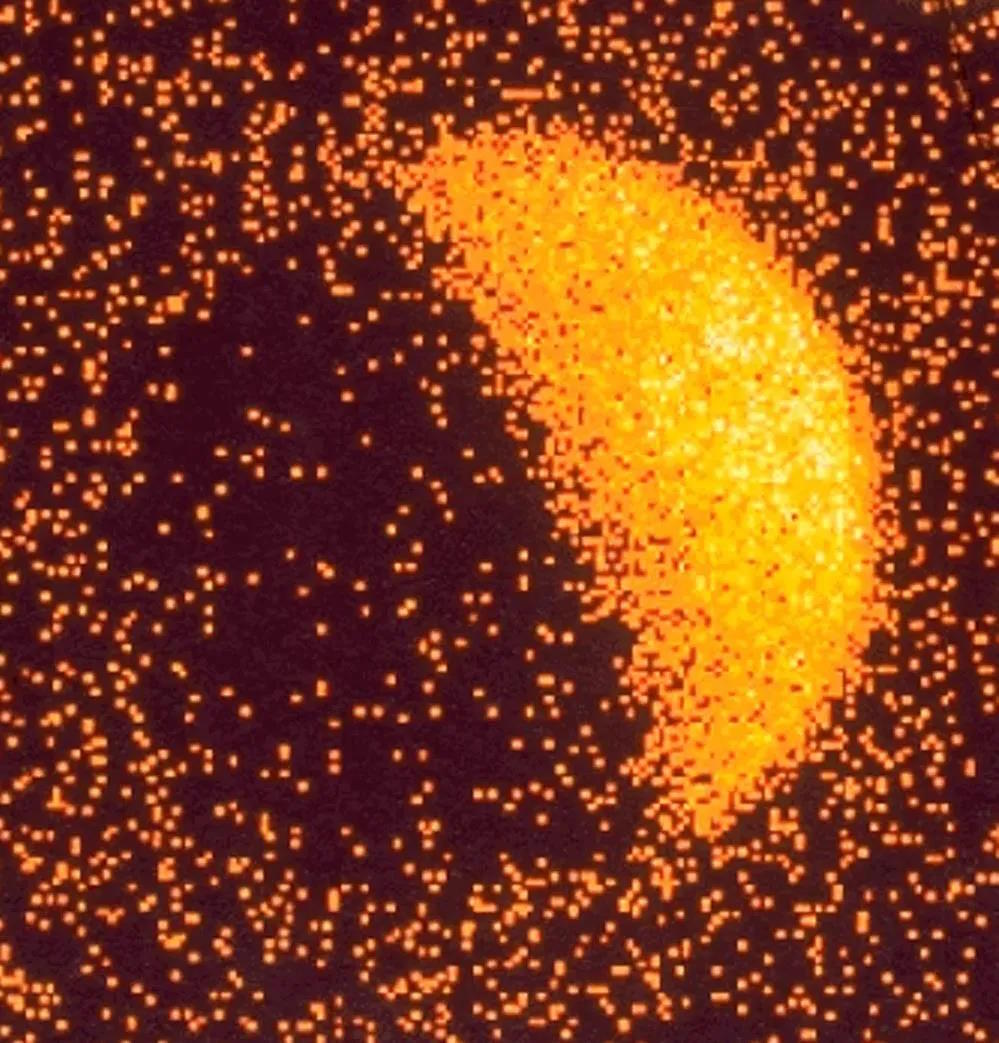
Although the name Hubble is synonymous with NASA’s Great Observatories, history’s most famous space telescope was one of four missions designed and built to view the Universe from above the confines of Earth’s atmosphere. While the atmosphere is either partly or fully transparent to certain wavelengths of light — particularly at visible and radio wavelengths — practically all of the microwave, X-ray, and gamma-ray wavelengths are completely obscured from Earth’s surface, along with much of the infrared and ultraviolet as well. To overcome these limits, NASA’s fleet of Great Observatories included:
- Hubble, optimized for visible light observations that also extended a little bit of the way into the ultraviolet and the near-infrared,
- Spitzer, optimized to reveal the near-infrared and mid-infrared Universe,
- Chandra, specifically designed to view the Universe in X-ray light,
- and Compton, tailored to observe the highest energies of all: gamma-rays.
The Sun, a notoriously bright object, would’ve burnt out the optical systems for Hubble and Spitzer if they were ever pointed in the Sun’s directions, but for Compton, the Sun was actually a safe target.
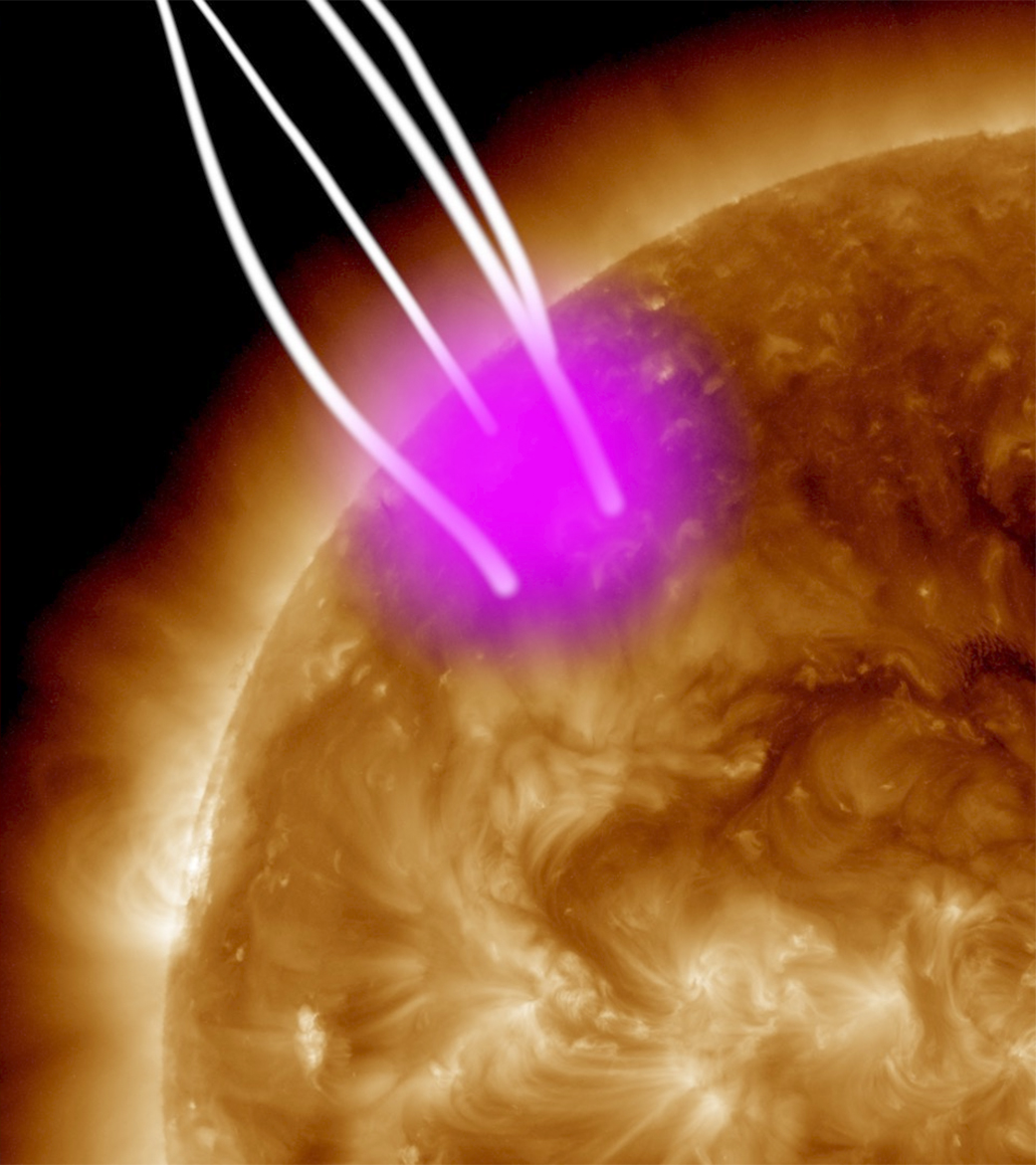
The reason why is relatively simple: the Sun, bright though it is, emits the majority of its energy peaked around the visible portion of the spectrum. Even within the visible light range of wavelengths, the Sun emits more green-and-yellow light than either red or blue light, and the amount of energy continues to fall off as we move out of the visible range in both directions. The Sun emits less ultraviolet light than visible light, and even less X-ray light than ultraviolet light. Similarly, the Sun is less energetic at near-infrared wavelengths than visible light wavelengths, and continues to decline through the mid-infrared, far-infrared, microwave, and radio sets of wavelengths.
Because light is quantized into individual “packets” of energy — in the form of photons — there are fewer and fewer photons to observe the higher the energy (and shorter the wavelength) we choose to examine. While the Sun is far and away the brightest light source from X-rays all the way down to radio wavelengths, it emits virtually no gamma-ray photons at all. Only the highest-energy sources of all, such as:
- the regions around black holes,
- neutron stars and pulsars,
- along with supernovae and their remnants,
are capable of emitting them.
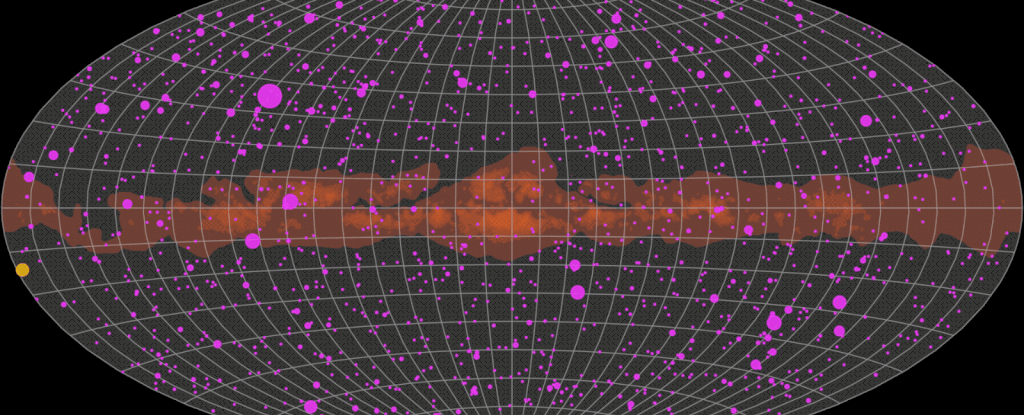
It came as no surprise, then, that the Compton gamma-ray observatory, specifically designed to look for photons with between 20,000,000 and 30,000,000,000 electron-volts of energy (compared to ~2-2.75 electron-volts for visible wavelengths of light), wasn’t really seeing gamma-rays coming from the Sun. Although the Sun creates gamma-rays in its core — where nuclear fusion reactions occur — those gamma-rays typically bounce around for more than 100,000 years before making it to the Sun’s outermost layers. By the time these photons are released, they’ve come down to much lower energies (and in much greater numbers) than the individual gamma-ray photons created by those core nuclear reactions.
Specifically, the Compton gamma-ray observatory had an instrument aboard it known as EGRET: the Energetic Gamma Ray Experiment Telescope. EGRET operated for 9 years: from 1991 until the Compton observatory was purposefully deorbited in 2000 after a gyroscope failure. As our first observatory capable of accurately measuring the highest-energy photons from across the Universe, Compton, with its EGRET instrument (along with three others), opened a new window into the multiwavelength cosmos.

Although the Sun can produce gamma-rays during certain flaring events, that isn’t the case for most of the time. Under nearly all circumstances, the Sun is completely gamma-ray quiet.
But during the early phases of the Compton mission, the Moon passed into the Compton gamma-ray observatory’s field of view multiple times, where the EGRET instrument was capable of observing it. Lo and behold, over those same time periods where the Sun was emitting no gamma-rays at all, the Moon appeared bright to Compton’s eyes. The Moon was doing something that the Sun wasn’t — emitting gamma-rays — implying that, somehow, the Moon was doing a whole lot more than just reflecting sunlight.
This isn’t the case for all the other wavelengths of light emitted by the Moon. Almost all of the Moon’s light, from X-rays to ultraviolet, visible light, infrared, microwave, and radio light, comes from reflecting the light that arrives from the Sun. Even though the Moon re-radiates its absorbed heat as infrared radiation, it’s still the case that the majority of the Moon’s infrared radiation comes from reflected sunlight. But for gamma-rays, that cannot be the case at all.
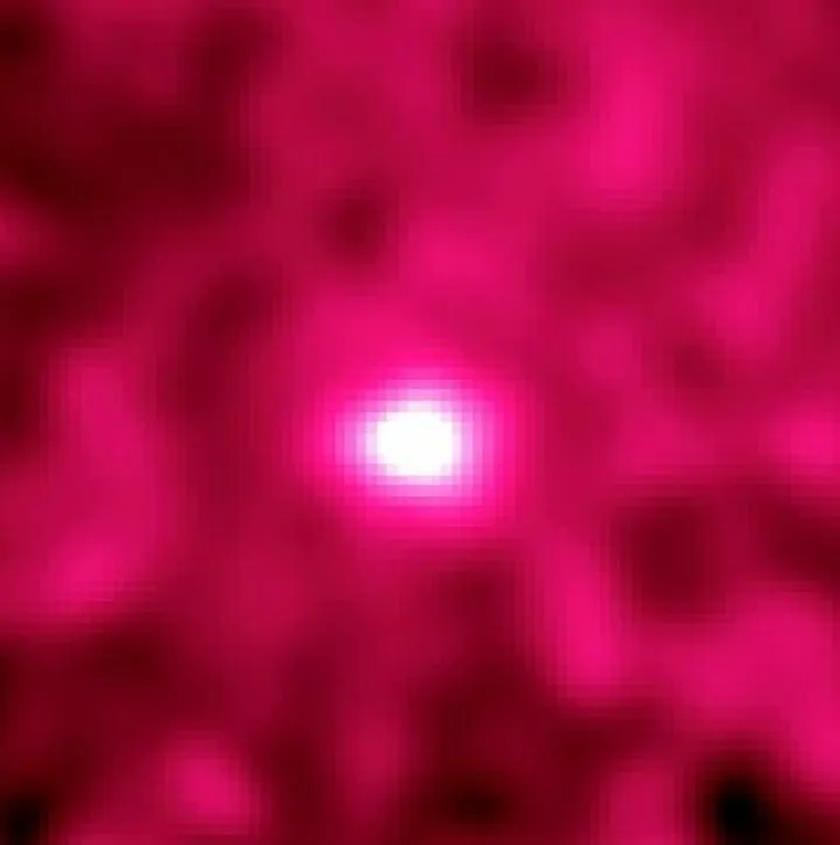
This phenomenon puzzles even most astrophysicists when they first learn about it. Why would the Moon, famous for not generating its own light but for reflecting the light of the brighter objects close to it — sunlight on the illuminated portion of the lunar surface, and Earth-light on the darkened portion (a phenomenon known as earthshine) — make its own gamma-ray light?
The key is to put two distinct physical phenomena together: the presence of cosmic rays and the composition of the Sun’s photosphere versus the Moon’s surface.
From all across the Universe, high-energy sources of particles are emitted. These particles, known as cosmic rays, are mostly composed of single protons, although heavier atomic nuclei, electrons, positrons (the antimatter counterpart of electrons), and neutrinos are all present as well. They arise from a wide variety of phenomena, including stars, stellar remnants, collisions of hot gas, colliding neutron stars and white dwarfs, tidal disruption events, and a variety of other steady and cataclysmic events. One of the biggest sources of cosmic particles in our corner of the cosmos, unsurprisingly, is our own Sun: in the form of the solar wind.

From all directions on the sky, including outward from our own Sun, these cosmic particles bombard the planets, moons, and other objects present within our Solar System. When these fast-moving particles, largely protons, hit the Sun, they run into only relatively light, low-mass particles: other protons, helium nuclei, and electrons. The way it’s possible to stimulate the emission of a gamma-ray is to have these cosmic rays knock into another atomic nucleus with the right energy to boost it into an excited state: a configuration of protons and neutrons that’s in a high-energy, metastable state.
But protons and helium nuclei don’t get boosted into metastable states from collisions with protons, which is why the Sun can’t emit gamma-rays through this problem. You need heavier atomic nuclei for that: elements farther up the periodic table like carbon, oxygen, calcium, silicon, iron, etc. The Sun has very little of these elements present in its photosphere, but the Moon’s crust is almost exclusively composed of these heavier elements. When cosmic rays — including, in part, plain old protons from the Sun’s solar wind — strike the Moon, the recoil from those heavy elements knocks them into an excited state. When they then de-excite in response, it causes the emission of gamma-rays.
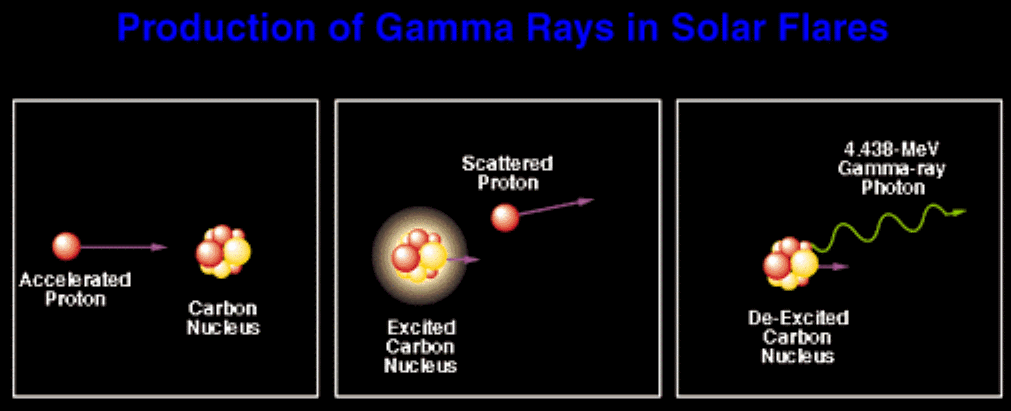
The Sun does, however, affect the gamma-rays that are emitted from the Moon in one particularly intricate way: through the Sun’s magnetic field. Just as the Sun has an 11-year solar cycle that involves periodically increasing and decreasing numbers of sunspots and solar flares, it also possesses a complex magnetic field. The same 11-year time cycle occurs for that as well, where the shape and orientation of the Sun’s magnetic field, including how it extends throughout the Solar System, changes how the cosmic ray protons responsible for the Moon’s gamma-rays actually impact the Moon itself. The Moon, whose magnetic field is negligibly small, does not regulate itself in this fashion at all.
Over time, the gamma-ray flux from the Moon fluctuates by about 20% due to these periodic changes in the Sun’s magnetic field. Because it’s mostly the cosmic rays from sources outside our Solar System, rather than from our Sun, that drive the gamma-rays from the Moon, the gamma-ray signal doesn’t fluctuate with the month or the cycle of lunar phases. Instead, it’s not only steady, save for the ~20% variation over an 11-year period, but the Moon always appears to be in a “full” phase when looked at in any orientation in the gamma-ray sky.

But Compton hasn’t provided us with our best view of the Moon in gamma-ray light; it only provided us with our first, early view of what the Moon looks like from a gamma-ray perspective. Operating today is a much superior NASA observatory: NASA’s Fermi mission. With a far greater sensitivity compared to Compton, as well as superior energy resolution, Fermi simply accumulated data of gamma-rays from the Moon over very long periods of time.
In the 7-panel image, below, you can see Fermi’s gamma-ray view of the Moon at snapshots representing:
- 2 months,
- 4 months,
- 8 months,
- 16 months,
- 32 months,
- 64 months,
- and 128 months of data.
As greater amounts of data are collected, the shape and size of the Moon, denoted by the bright, monochrome yellow region in the final frame, clearly begins to come into focus. Over all time intervals, the Moon outshines even the Sun in gamma-ray light.
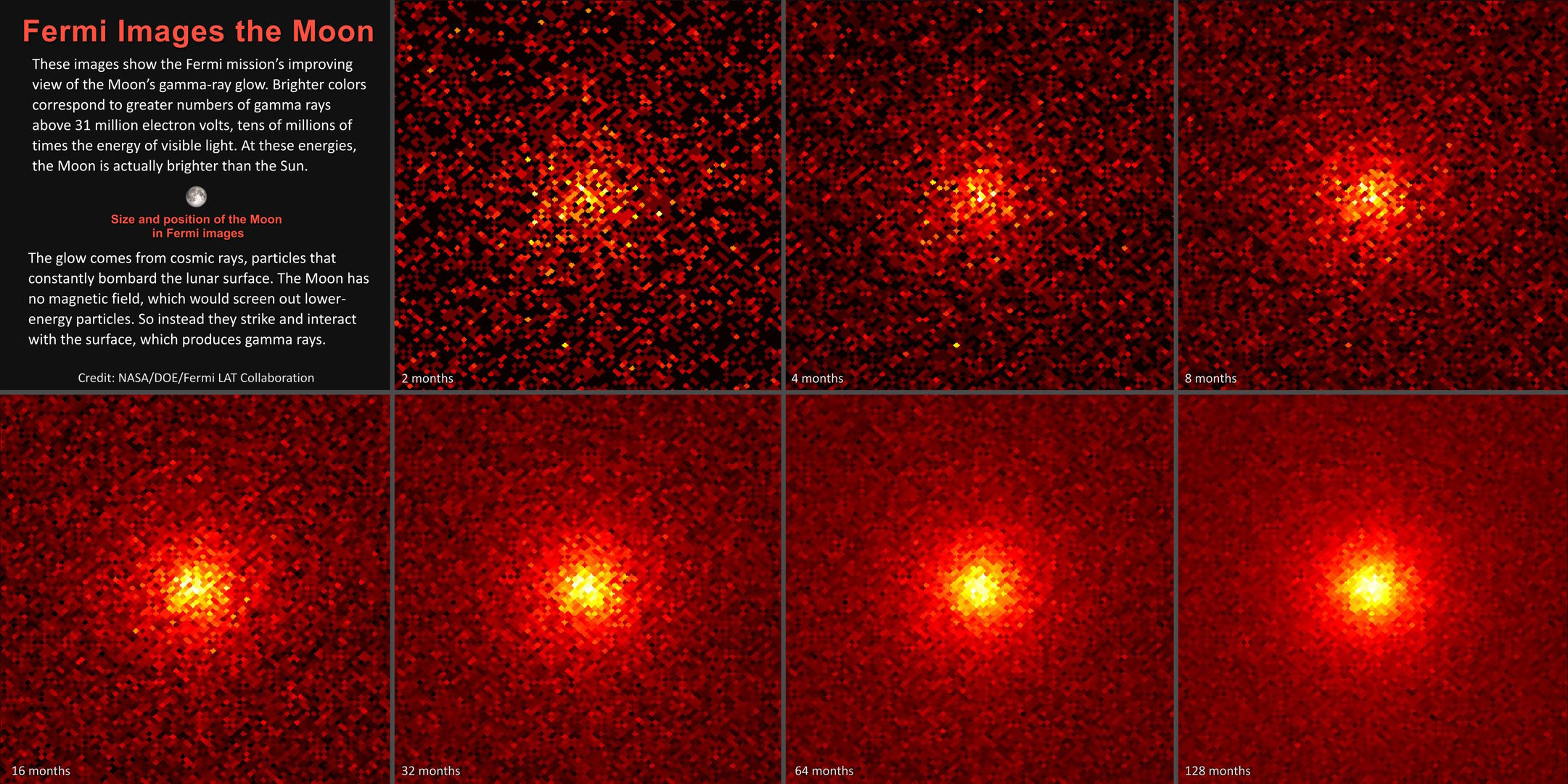
Although it’s very tempting to assume that what we see in visible light extends to the rest of the electromagnetic spectrum, that’s simply not the case. The Sun produces the vast majority of its light and gives off the vast majority of its energy thermally: because it’s simply composed of matter that’s been raised to a set of very high-energy, high-temperature conditions. This applies to most of the Sun’s light: from X-rays through the visible part of the spectrum all the way down into the radio, but it doesn’t apply to the highest-energy light of all: gamma-rays. Except for the rare circumstances where it flares, the Sun produces only negligible amounts of gamma-rays.
The Moon does indeed reflect all types of the Sun’s light, albeit with slightly different efficiencies at different wavelengths. However, the Moon has another, superior way to make gamma-rays: from high-energy cosmic ray collisions with its solid, heavy-element-rich surface. It’s this latter effect, absent on the Sun due to the Sun’s overwhelming amounts of hydrogen-and-helium present in its photosphere, that enables the Moon, at the highest energies of all, to outshine the Sun.
When songwriter Elaine Laron wrote, “I think I’d rather be the Sun that shines so bold and bright, than be the Moon that only glows with someone else’s light,” she had it right with one exception: in gamma-rays. At the absolute highest energies, the Moon glows with a recoiled light all its own, irrespective of any light from the Sun.
